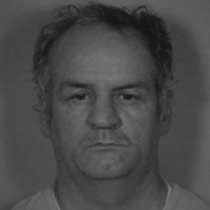Arthur John Shawcross
In the late 1980’s most serial killers had been caught or blazed their way through the media and courtroom. Arthur Shawcross became known as the Genesee River Killer. Shawcross has a uniquely vicious and brutal reputation among even serial killers due to the pointless nature of his crimes. Shawcross’ claims of childhood sexual abuse were disbelieved and his killings after release on parole for manslaughter raised questions about the criminal justice system.
Born in 1945 in Kittery, Maine, Shawcross claimed a childhood influenced by a domineering mother. The oldest child, he was wetting his bed into his teens, Shawcross was nicknamed ‘Oddie”. On probation for burglary and assault before he was married, Shawcross did a stint in Vietnam circa 1968, and took sexual gratification from committing arson and hit prison before his third marriage in 1972.
Weeks after wedding number three, Arthur Shawcross was fingered in the disappearances of local children. This might have been enough for many people to suggest Shawcross needed to stay in the slammer. But the sexually aggressive killings of Jack Blake and Karen Hill paved the way for more time inside for Shawcross. But like many sentencing deals of that era, compliance of regulations for evidence lightened pleas and reduced time for serious public threats like Shawcross.
Detectives later asked Shawcross after capture about his motivation to kill, to which he responded he was “taking care of business”. Shawcross resembled an Italian pizza maker, and released from Attica in 1987, the ‘Rochester Rampager” resumed murder with a slightly changed modus operandi. Women from the wrong side of town started to crop up as corpses.
Rochester, New York, in 1988 greeted the killings with open-mouthed dismay. They had area communities starting to lock their doors when prostitutes started turning up dead. Shawcross was termed the ‘Monster of the Rivers”. Arthur Shawcross claimed a chemical compulsion that elevated his killing likelihood as an unavoidable biological dynamic.
The Rochester Rampager struck again and again, and the red light district of the area thinned as resentful prostitutes eyed police patrols. The nature of sexual assault was sometimes, although not universally present, a curious fact since the majority of Shawcross’ later victims were sex workers. Yet his practice of excising and mangling the genitals indicates a clear hostility aimed at women.
Married again by 1989, Shawcross began slicing up victims and mutilating their genitals, although suffocation and strangulation were preferred methods of killing. By 1990, Shawcross had put double digit serial killing numbers and would have killed further if carelessness hadn’t ended his spree. Arthur Shawcross was known as a vicious killer for the senseless mutilations he visited upon the corpses as well as the capital crimes he committed.
Shawcross would later allocute to eleven murders but was suspected of possibly more. Like many serial killers, by the time the incarceration and sentencing rolled around he clammed up about additional killings. The consciousness necessary to target victims, pick them up, hide the murder, then hide the bodies is hardly a chemical problem.
But Shawcross was doubling up on a murder spree, having been in jail before for other murders. Shawcross appeared not to have followed probationary or parole restrictions. Many debate the possible saving of eleven lives if Arthur Shawcross had been simply not released. Fourteen years of incarceration hardly repaired mental illness or changed Shawcross’s capacity to kill.
Criminologists debate the impact of a teenage injury to the head. Brain activity influencing inhibition and behavior control is thought to affect the mind’s control of killing. But the planning and execution of so many steps repeatedly convinces juries that the individual is responsible for the accountability of the choice to kill. Shawcross undeniably had an appetite for killing. Shawcross was under no delusion or was pursuing no idealized “ultimate kill’ of a personality of his own life. Shawcross never learned to suppress his violent impulses and thus had no paranoia.
Shawcross related after incarceration that he acquired a habit of killing in armed service in Vietnam and had no way to arrest this habit when returning to ‘normal” life. Yet the serial killer mentality does not preclude the psychosis state of mind that is triggered by insanity.
The line between culpability for serial murder and claimed insanity by some defendants comes to the fore when discussing Arthur Shawcross. If Shawcross lacked the proper inhibition to keep him from killing, the associated freedom from responsibility and inclination to volition is not disengaged.
The serial killer as a media celebrity can have suggested a role for Arthur Shawcross to play. The stories the arrested criminals tell in the “confession” stage of their criminal arrest phase do not always match the details shared during their trial phase and sentencing. But Shawcross sustained an ugly appetite that claimed more victims until he was caught.
Like many serial killers and murderers with a taste for activities involving dead flesh, Shawcross targeted a victim profile of female prostitutes because according to the conventional more of the time cast a shade on their innocence. And Shawcross like other killers such as the Canadian serial killer Robert William Pickton, depended on the idea that nobody would miss a prostitute and call them in as missing to the police. Sadly, for a time this was true and it helped enable them.
Shawcross was caught not because law enforcement tracked him down from a profile or demographic, but from geographic visitation of the dump sites. Police helicopters noticed him stopping to “visit” one of found remains sites. Shawcross just may not have had any other options.
Helicopters used to patrol for bodies hidden in the Genesee River Gorge noticed his car near a dead body. Following up the driver later, they interviewed Shawcross. At that point, Arthur Shawcross simply may not have been prepared to be caught. But Shawcross assented to interviews that led to further confessional details of his crimes.
Arthur Shawcross had murdered a ten year old boy Jack Blake in 1972. Shawcross was earlier convicted, in Watertown New York, of killing an eight year old girl. New York did not have the death penalty at the time of Shawcross’ initial sentencing. But Shawcross did not have a raison d’etre, no resemblance or motif for targeting his victims. His desire to kill was answered by deeds again and again.
Like many serial killers, early incarceration that results in psychiatric evaluation does not forestall future killings. Shawcross killed two children but was yet set free to the general public. Yet Shawcross claims that it was in Vietnam where he got a taste for killing and even cannibalism. But Shawcross is suspected of manufacturing cannibalism evidence and stories to support a later legal claim of insanity.
Police initially thought the slain hookers were “routine” homicides native to the nature of the trade. Law enforcement advised prostitutes to work in pairs and trust nobody. But as the death count grew, the police suspected he was a known “customer” of prostitutes and for that reason was always able to pick them up.
The Genesee River Gorge was a place likely to hide corpses for some time. Police forensics require fresh evidence and controlled environments for body identification and best evidence taking. Drug use had grown to the point where women were very easy to pick up and not strictly kept track of for obvious reasons. The dumping of bodies on back roads and in the woods pointed to someone familiar with the area who trafficked it normally.
The killer worked rurally, finding women on downtown Lyle area red-light districts, yet dumped bodies in rural areas. Authorities profiling the killer suspected a white male of blue collar or menial occupation, possibly married or with a girlfriend was doing the murders.
Shawcross killed women over a two year period, committed for a period of about two years. The strangling and suffocating of them was followed by mutilation and hiding the corpses. No physical attribute, ethnic origin, religious affiliation, or other detail served as a common denominator for the victims.
If Arthur Shawcross truly had an uncontrollable habit of killing, why were the episodes of killing spaced in a two year period, instead of happening all at once? Why did he never seek help for his “habit”? Why did an experienced Vietnam veteran kill first children and then only women?
Serial killers who prefer to kill are not insane, merely pursuing their deadly tastes in murderous behavior. No intimates or cronies of Shawcross came forward with evidence he was concerned about his moods or the consequences of his behavior. Shawcross died in prison in 2008 of a mysterious leg complaint, followed by cardiac arrest.
In all Shawcross committed 14 murders between the dates of May 7, 1972 and December 28, 1989.
Article by Roy Whyte . Visit his Google+ page for more.





That dirt bag should have been hanged a long time ago!
Hangings too good for that one George. The stories he told police of the murders were some of the most cruel things I’ve ever heard, and I’m no shrinking violet.
Like eating a girl alive and laughing when she urinated herself as he took a bite out of her. If we ever saw him him hey George? Unbelievable miserable (insert favorite expletives here)
His cause of death is almost certainly a Thrombosis that traveled from his calf to his heart. The same thing that kills people on long haul flights because they sit for too long. It makes sense because in jail he can’t just go for a walk right especially if he was someones girl. Couldn’t happen to a nicer fella. I hope he was terrified as he realised the Shades were draggin’ him off to the pit.